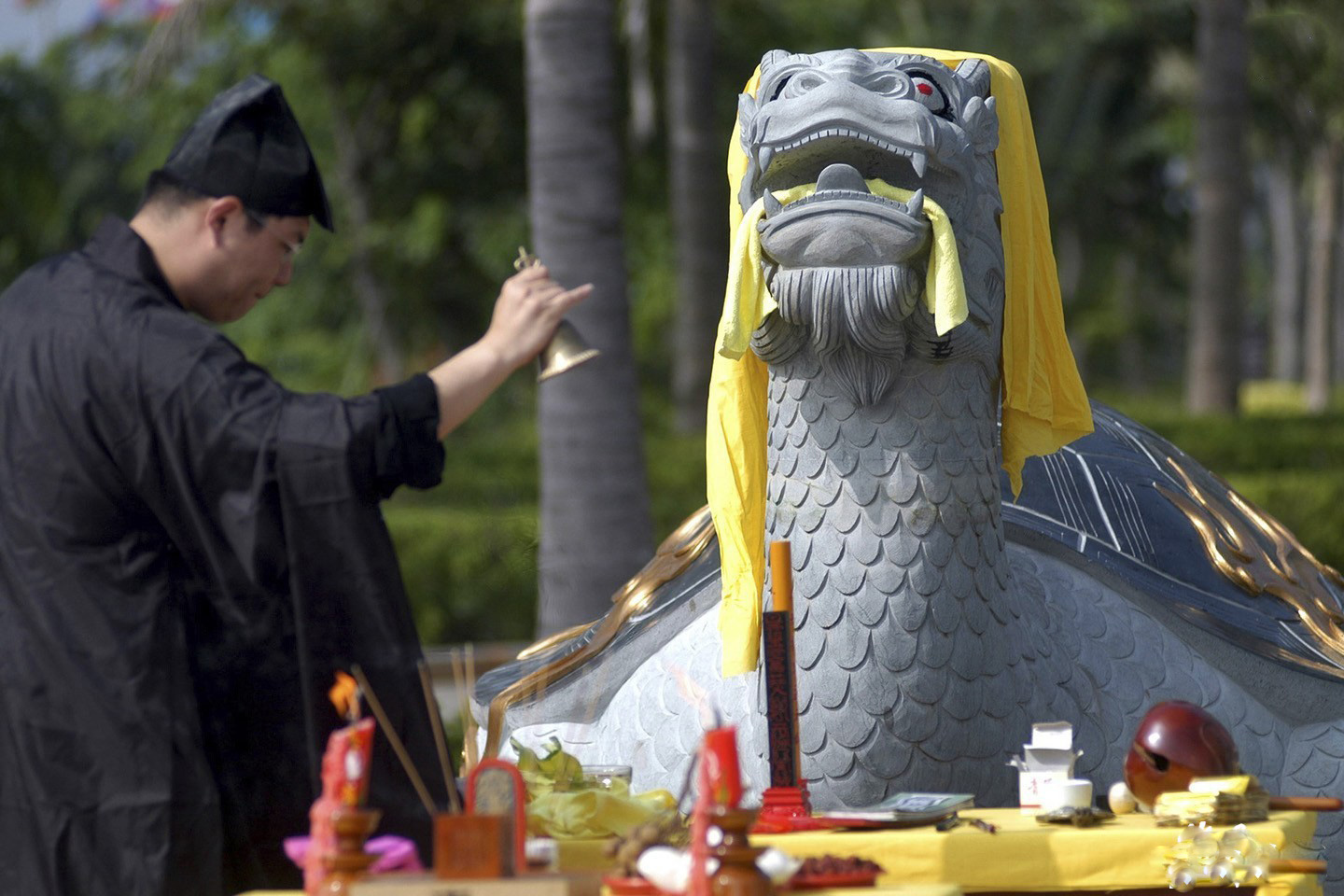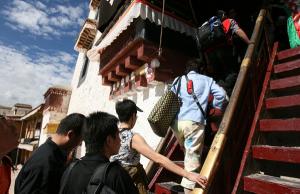Qingyang Palace
The Qingyang Palace (lit. cyan goat or sheep palace, also know as Qingyang Temple or Qingyang Gong Temple), situated at the southwest of Chengdu City, is the oldest and largest Taoist temple in the area of Southwest China's Sichuan Province. Designated to be a key national Taoism temple, the Qingyang Palace got its popular fame from the two blue-green goats made of bronze in the Sanqing main Hall. Of them, one unicorn-like bronze goat statue was moved to the palace from Beijing during the first year of the Qingyong Emperor in the Qing dynasty (1644 - 1919). The statue looks like a sheep but it is actually an integration of the 12 animals in the Chinese Zodiac. These two goats have become the symbol of the Qingyang Palace and attracted countless tourists.
The Qingyang Temple formed it construction in the Tang Dynasty (618-908). Xuan Emperor met Du Fu (a famous poet) here when he kept himself away from Turmoil of Anshi in the Tang Dynasty. For the similar reason, another Tang's emperors came here, saw the light of lucky omen. He considered it as a holly place and decide to built the palace to large scale. Once destroyed by war, the palace was rebuilt in 1667 during the reign of Emperor Kangxi and continued to expand after that. It is magnificent and grand, covering an area of 40,000 square meters. Major buildings include the Temple Gate, Sanqing Hall and Tangwang Hall, etc. Inside, the Hunyuan Hall is tall, big and grandiose.
The Bagua Booth (Eight Diagrams Booth) where the statue of Laozi on a bronze cow is enshrined is the best-preserved and most luxurious building among these architectures. The principal building Sanqing Hall where the Sanqing (Taoist Trinity) Statue is enshrined is tall, large and solemn, with a hanging bell of about 3,000 kg and a pair of iron incense-candle canisters of 1,000 kg on the left part. The most precious relic in the Qingyang Palace is the canon of Taoism Sutra. It is the best-preserved version in the world as well as a precious material for research on Taoism.















